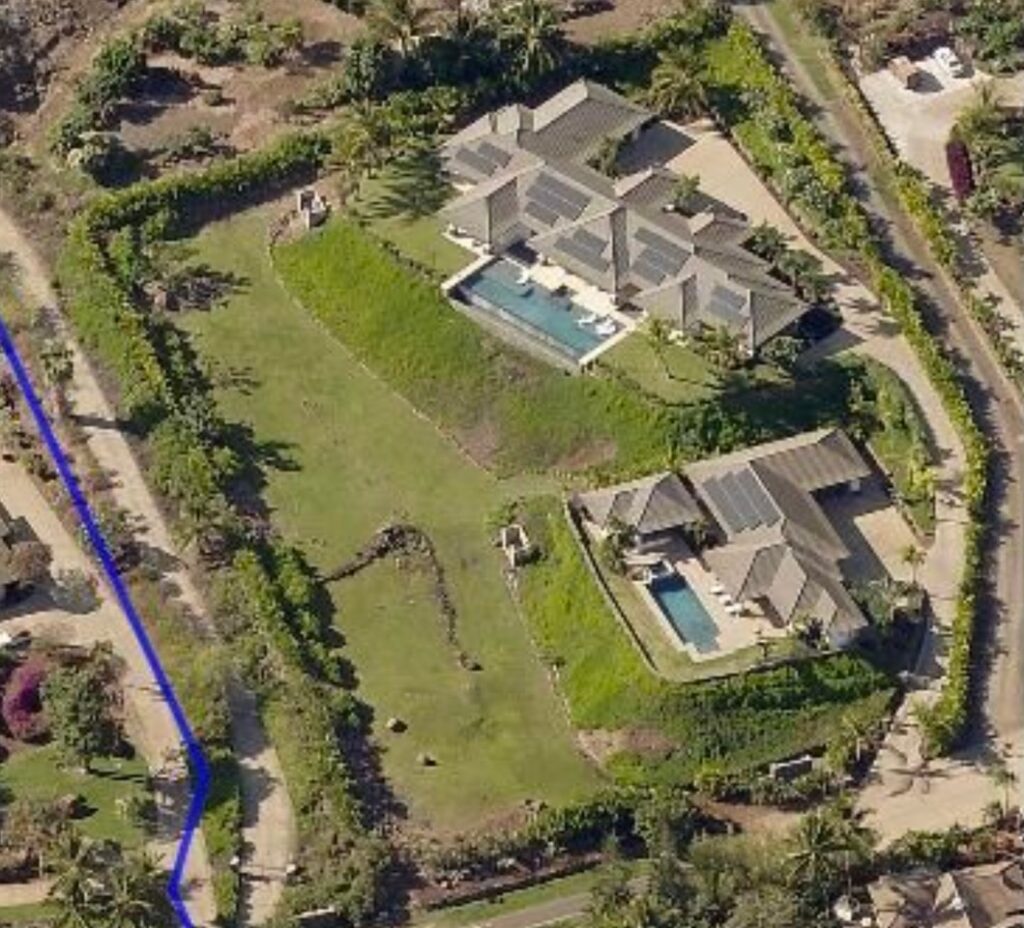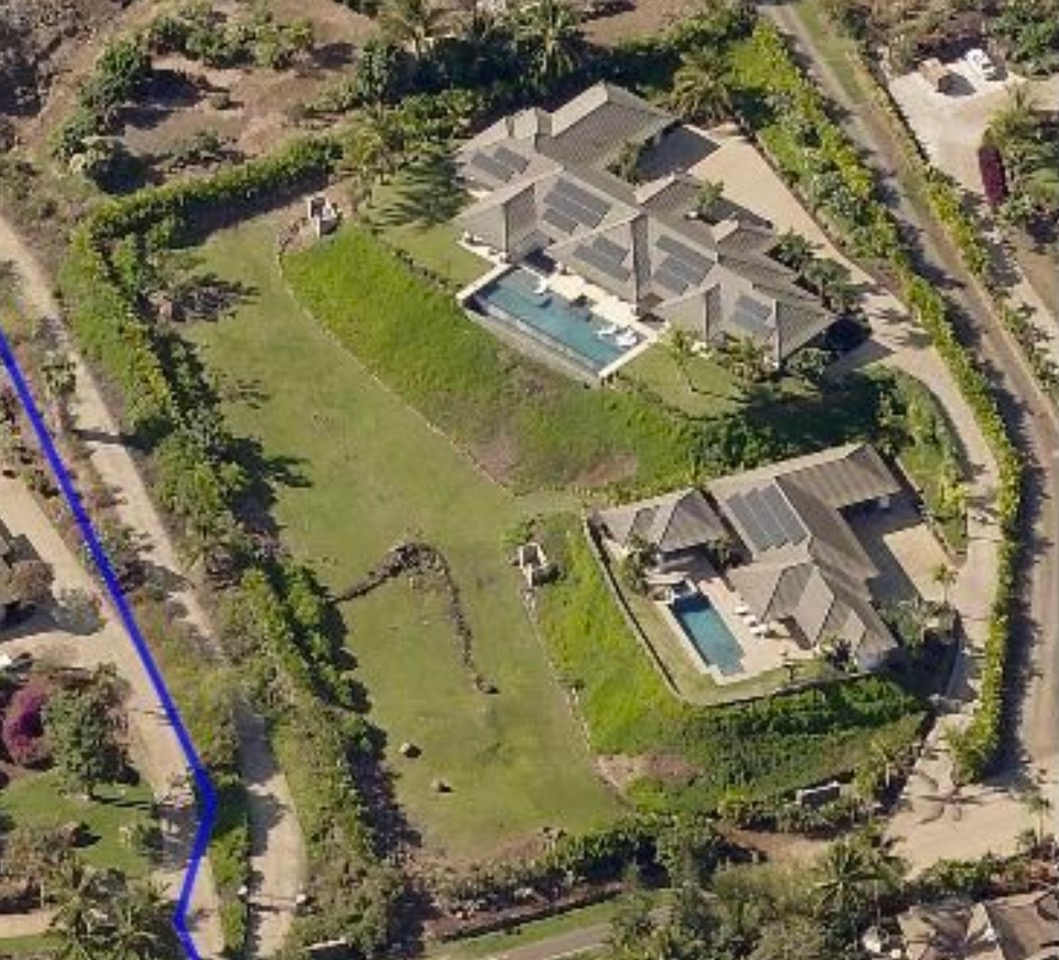What comes to mind when you think of a farm? The white frame house in Grant Wood’s “American Gothic?” Endless acres of melon plants or cabbages? Barns with cattle, a chicken house, a pig sty?
In the Launiupoko area of Maui, just south of Lahaina, a “farm” now routinely refers to a property where the “farm dwelling” is a lavishly landscaped mansion whose tax-assessed value runs up into seven or eight figures, where pools, jacuzzis, and spas substitute for stock tanks and troughs, and where the only fig leaf of agricultural activity is the regimented planting of coconut palms along the drive leading to the porte cochere and multi-bay garages.

Yet in order for these homes to be permitted by the county, property owners, in each and every case, had to swear to the Maui County Planning Department that their house would be “used in connection with a farm,” defined as “a lot on which the majority of land is used for and the predominant activity is agriculture and/or agricultural land conservation.”
There is, frankly, little in the way of bona fide agricultural activity in the seven “residential agricultural” subdivisions that Peter K. Martin has carved out of land that for more than a century was part of the vast Pioneer Mill sugar plantation. Perhaps one could argue that the lot owners are engaged in “agricultural land conservation.” That, however, is an even more difficult argument to make, as the formerly productive ag land that these estates occupy would seem to be forever locked away from, rather than conserved for, any conceivable farming or animal husbandry operation.
Seven of the houses have been permitted for short-term rentals. Far more – 178 out of 375 – are taxed at the “non-owner occupied” rate.
And yet these nominal farm dwellings are sucking dry the life blood of the land: water. Before the state Water Commission imposed limits on what could be taken from Kauaʻula Stream in 2018, these “farms” were using an average of 4,800 gallons of non-potable water a day. Potable water consumption, from wells, was 705 gpd.
More recently, in 2022, non-potable water consumption has declined slightly to 3,069 gpd (a combination of stream and well water), while potable water consumption has more than doubled, to 1,766 gpd. Adding both water sources together, the result is nearly 5,000 gallons per day of water, per lot, taken from the West Maui mountains.
By any standard, this is profligate. Most households use 300 gallons of water a day. And even if the potable water is used to support agricultural activity, few crops are so thirsty as to require watering at the rates seen in Launiupoko, especially given that a large fraction of the surface of most residential lots is impermeable (paving, rooftops, pools, patios).
Yet the Launiupoko Irrigation Company and Launiupoko Water Company are seeking permits from the Water Commission not just to continue this waste, but to expand it to include 133 “authorized planned uses” covering more than 1,000 additional acres.
This water use is not in support of agriculture.
If anything, it is to the detriment of the true farmers in the area, those who are struggling to get enough water from Kauaʻula Stream to keep their taro loʻi productive. Time and again, Martin and his companies have made known their antipathy to these people, whom he evidently regards as freeloaders despite their constitutional rights to the same waters that he is diverting for profit – and notwithstanding an agreement that he himself signed.
The development of these extravagant estates should never have been allowed. Following the devastating fire of 2018 and the even more tragic fire of 2023, and given the pattern of reduced rainfall over recent decades, it is past time to rethink water allocations for West Maui.
When the staff of the Water Commission is reviewing applications for water use permits from existing users, it should question the extravagant usage seen in many of the 385 lots in the Launiupoko subdivisions. So far, even when irrigation water deliveries to the area have been constrained, many users ignore pleas to conserve and simply use potable water (unconstrained) instead. Suggestions that drought-tolerant plants be employed in landscaping seem, from aerial photos of each of the properties provided to the PUC, to be ignored. It is clear most of the homeowners in Martin’s subdivisions think they are entitled to as much water as they want and have little if any regard for the impact their wasteful ways may have on others. And yet Launiupoko Irrigation Company had the nerve to suggest to the Public Utilities Commission that it be allowed to charge kuleana water users, since the cost of water to them “will also result in conservation efforts on water use in this area.”
These people have no shame.
In response to a question posed to the county as to how it enforces its ordinance regarding farm dwellings on agricultural land, the Planning Department had this to say: “Under existing regulations, the Department of Planning does not take action against property owners who stop farming after farm dwellings have been constructed with permits. The penalty for failing to farm is currently addressed through real property taxation. The department does support escalating unfarmed agricultural lands to a level that will stimulate land owners to make unused agricultural lands available to farmers in the community, in order to benefit from tax incentives for active agriculture.” As if the owners of these luxury estates are sensitive to increases in property taxes!
It is time for Maui County to take a hard look at what it has allowed to be built in this area and is permitting to continue. As legislators and council members reflect on what can be done to restore the Lahaina community and, especially, to rehabilitate the lost wetlands and ponds of what used to be the Venice of the Pacific, the real cost of these luxury subdivisions should be taken into account. Regardless of the relatively high property tax revenues these few properties generate, the burden they place on natural resources, to say nothing of the social inequities they perpetuate, should be given all due weight.


robin ritchie
An ethics investigation was announced today on Hawaii News Now. They are investigating V R Hinano Rodrigues and his association and trips to Vegas at Christmas, with Peter Martin.
Peter Martin has the group West Maui Taxpayers Association lobbying to raise money to build him a Fire Station in Olowalu to service his 1000 acres of unkept land and the few houses in Olowalu. A fire station would help Martin be approved to have his next development in Olowalu approved.. The lack of water does not seem to concern him.
Peter Martins development at Launiupoko started as 5 acres agriculturally zoned lots selling for under $400,000. Now that the County of Maui has allowed the “farm owners” subdivide and be used as multi Alex vacation rentals , the properties are selling for over $8,000,000
All of West Maui only has 2 fire stations and during the Lahaina August 8, 2023 fire many fire plugs had no water or ran out of water when the firemen tried to fight the devastating fire.
robin
p.s.
there is very good video and evidence posted on Facebook by Kekai Keahi.
It is worth looking at his Facebook page. he posts water videos